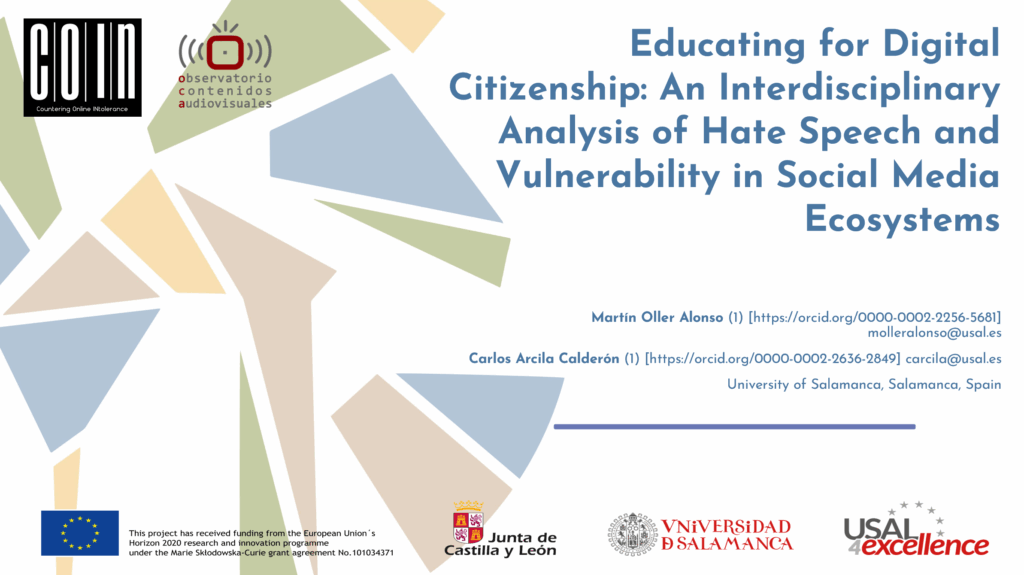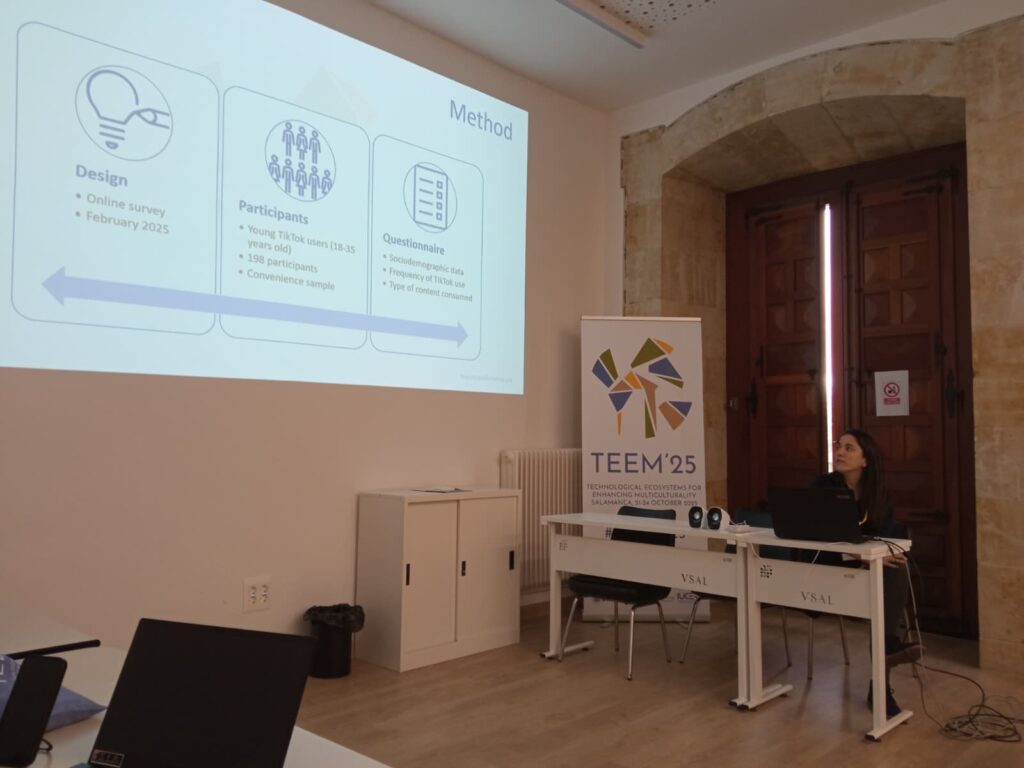The COIN project shared new results at TEEM 2025, presenting an interdisciplinary analysis of online hate speech, social vulnerability, and digital education. The talk—“Educating for Digital Citizenship: An Interdisciplinary Analysis of Hate Speech and Vulnerability in Social Media Ecosystems”—was delivered by Martín Oller Alonso and Carlos Arcila Calderón (University of Salamanca).

What we studied
Using data from X (formerly Twitter), Facebook, Instagram, and TikTok in Spain, the team analyzed a corpus of 798,475 posts published between April 1 and August 13, 2024. Platform subsamples were built via official APIs and CrowdTangle: X (42,875), Facebook (409,618), Instagram (70,883), and TikTok (275,100). Automated detection combined multilingual BERT classifiers with six Perspective API scores (0–1): toxicity, severe toxicity, identity attack, insult, profanity, and threat.

Key findings
Intersectional hate is amplified. On X, posts attacking people across multiple identities (e.g., Muslim migrants) show the highest share of intersectional hate (≈4.5%), along with higher engagement than single-axis hate. Average toxicity on X is ≈0.40, above the cross-platform mean.
High-volume exposure on Meta platforms. Facebook and Instagram account for the largest volumes of toxic content in the corpus; on Facebook alone there were >216k posts targeting Muslims and ~73k referencing migrants, including >12k intersectional combinations.
A coherent “field” of aggression. Across platforms, the six toxicity attributes are highly intercorrelated (r ≥ .80), especially toxicity–insult (X r=.977; TikTok r=.934), followed by toxicity–identity attack and toxicity–profanity. This supports reducing and regularizing the trait space for risk assessment.
Why it matters
The project frames intersectionality as both an identity lens and a systems-design requirement: platform policies, recommender algorithms, enforcement workflows, and community guidelines shape who gets targeted and how far hostile content travels.
From evidence to action
Governance & compliance: Integrate intersectional risk signals into ranking and enforcement; implement algorithmic guardrails that down-rank content with high identity-attack propensity; and guarantee researcher/civil-society data access for systemic-risk audits—aligned with the EU Digital Services Act.
Education: Design intersectional digital citizenship curricula grounded in Council of Europe DCE, UNESCO MIL, and Spain’s MRCDD/DigCompEdu, including competencies for detection, counter-speech, restorative dialogue, and authentic project-based learning tasks tied to transparency and risk-mitigation workflows.
About the session
The presentation summarizes ongoing results from COIN (2023–2026) and outlines best- and worst-case scenarios for Spain’s research, regulation, education, and civic spheres in the face of platform policy shifts.




Speakers:
Martín Oller Alonso — molleralonso@usal.es
Carlos Arcila Calderón — carcila@usal.es
Conference website: https://2025.teemconference.eu/